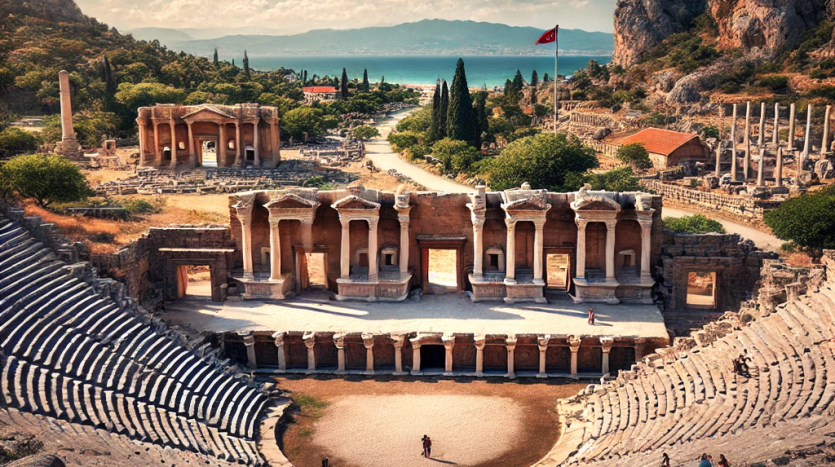The Antalya district in Mediterranean Turkey boasts many attributes. As the second most visited holiday destination in the country, it offers an abundance of activities for foreign visitors, and the hospitality standards in hotels and restaurants are exceptionally high. Among its many attractions, Antalya’s historical ruins and sites garner international admiration. With a commitment to preserving and showcasing its rich history, Antalya aligns with Turkey’s 20-year tourism initiative to become one of the top ten visited countries in the world. Here, we explore some of the most notable historical ruins in Antalya that captivate history lovers worldwide.
The Best Historical Ruins in Antalya
Aspendos: The Impressive Roman Theatre
Aspendos is arguably the most famous historical site in Antalya, renowned for its well-preserved Roman theatre. Located 25 miles east of Antalya city centre, the theatre dates back to approximately AD 80 and can accommodate around 15,000 spectators. Known for its exceptional acoustics, it is still used today for the annual opera and ballet festival. Other notable structures in Aspendos include the Agora ruins, Acropolis, and aqueduct.
Perge: The Allies of Alexander the Great
Closer to Antalya’s centre, ancient Perge was a prosperous trading port dating back to 1300 BC. Alexander the Great used Perge as a base for his campaigns, making it a significant historical site. The Byzantine era marked its decline as the coastline receded. The Antalya Archaeological Museum houses many artifacts from Perge, including statues and sarcophagi. Key landmarks within the old city ruins include the red Hellenistic gate towers, bathhouses, a 4th-century agora, and a 12,000-seater stadium.
Termessos: The Unconquered City
Termessos, built on the side of Gulluk Mountain at an altitude of 1665 metres, is one of the few cities Alexander the Great could not conquer. Its high altitude and subsequent inaccessibility set it apart from other historical ruins. An earthquake that destroyed its aqueduct and water supply led to its abandonment. The 4,000-seater theatre offers magnificent views over the surrounding plains. Other landmarks include rock tombs, the agora, a 100-seater Odeon, and six temples.
Phaselis: The Former Sea Trading Port
Phaselis, although smaller than other city ruins, charms visitors with its surrounding beaches. This ancient sea trading port enjoyed great commercial success but faced continuous pirate attacks. The main agora street, which stretches from one beach to another, and its humble theatre attract visitors. Mount Olympos stands tall in the distance, while daily boat trips dock in the bays, offering a unique way to visit Phaselis.
Side Town Centre: Ancient Ruins in a Modern Setting
The ancient city ruins of Side are unique because a modern town has developed around them. The Roman-style theatre, nearly as large as that of Aspendos, sits in the heart of Side. Entrance to the site is through the Hellenistic main gate, adjoining the well-preserved city ruins. The Agora square holds remains of the Tyche and Fortuna temple. Side’s combination of ancient ruins and modern amenities makes it a must-visit.
Olympos and Captain Euromos’s Sarcophagus
Olympos, nestled within a forested setting in Olympos National Park, offers a mystical ambiance. Key ruins include the Roman temple, bathhouses, and the mysterious sarcophagus of Captain Euromos. This sarcophagus suggests he was of nobility or wealthy standing, though his exact identity remains unknown. Olympos was a significant member of the Lycian League before its abandonment in the 15th century.
Myra and the Church of Saint Nicholas
Located on the outskirts of Antalya, Myra is famous for its theatre and the Lycian rock tombs carved into the hillsides. These tombs were placed high to allow winged creatures to carry the dead to the afterlife. Nearby, the Church of Saint Nicholas, known as Santa Claus, is also worth visiting. Despite Italian sailors stealing Saint Nicholas’s bones in the 11th century, the church remains a pilgrimage site for many Catholics.

